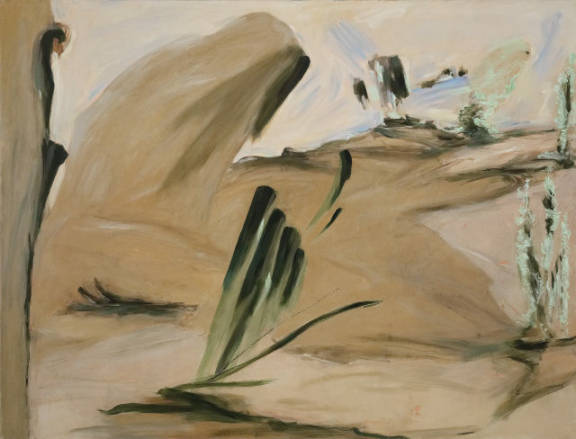In his paintings, João Queiroz does not so much use landscape as a subject as establish a relationship with it. This relationship is the result of an experience within the landscape, of a direct immersion in the natural environment which leads to the retention of impressions, feelings, memories or even actions which are only later translated to the canvas. His paintings, then, do not seek to imitate an external referent but to recreate, through a pictorial formalisation, the dynamic of a body moving through nature. In this sense, the aim is not the systematic portrayal of a point of view representing a visual relationship of simple contemplation, but to assemble and express the marks that recall various points in a journey: to set down the sequence of gestures and moments which are capable of recording and recreating an interaction between body and landscape.
This is an exercise in which, in addition to recognisable elements, indistinct forms and areas also emerge, with different speeds, intensities and textures, representing the variations in a phenomenological experience. In fact, João Queiroz’s painting at times approaches abstraction, experimenting with a boundary which, however, he never entirely crosses.
It should also be noted that, just as the painting exhibits the result of a physical relationship between the artist and the landscape, the dimensions of the canvas itself invite others to participate in the same relationship. This is achieved by establishing a physical connection between the painting and the viewer – who does not examine a rectangle on a wall but, in a relationship of parity, is confronted with a surface whose dimensions demand the use of the whole body in the act of perception.
MBA
October 2011

